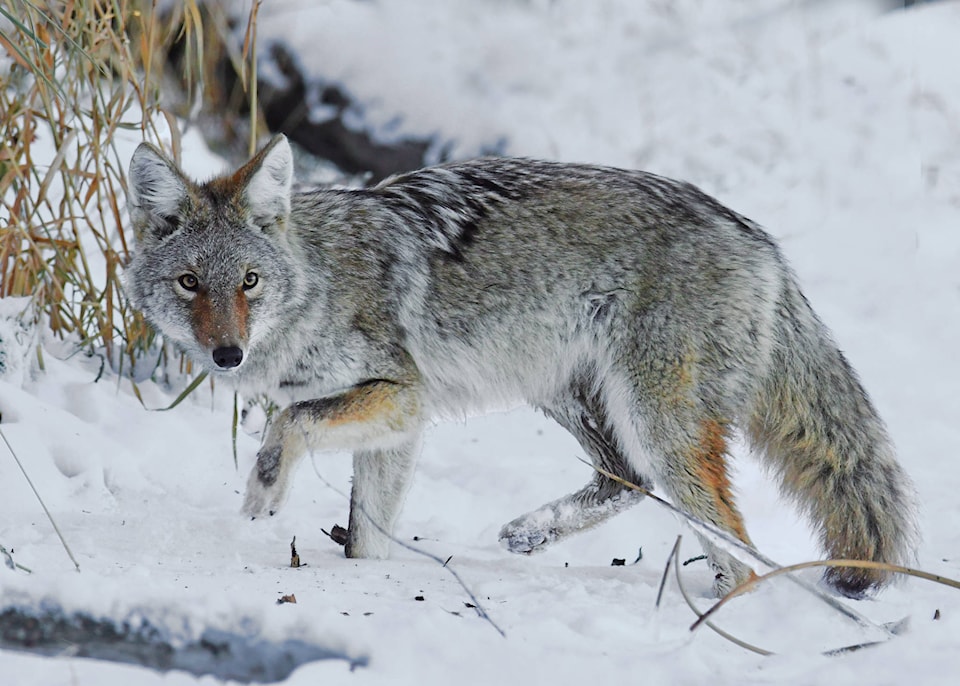During my early years, I remember coyotes being common wild neighbours in our farming community northeast of Rimbey.
Listening to the lyrical and spine-tingling howling of coyotes at night is one of my most iconic childhood memories. Sadly, there were many coyote haters in those days – farmers who regularly shot, snared and trapped them, and local yokels who took morbid glee in chasing them down on snowmobiles. While chasing them is now thankfully illegal, these wily and resilient species are still the target of merciless persecution, with many dying slow painful deaths in leghold traps and barbaric snares.
Interestingly, coyotes have found cities to their liking. Free from rural torment, they can find plenty of denning sites as well as food in urban parks and neighbourhoods. Coyotes are omnivorous, readily dining on everything from mice, rabbits, hares and other native prey to human-provided sources ranging from garbage, fruit, bird seed and compost to cats and small dogs.
Individual coyotes that become conditioned to backyard scavenging soon lose their fear of humans and can become aggressive, a situation that usually results in escalating conflicts resolved by lethal removal of the offending coyote. Urban coyote programs have been launched in both Edmonton and Calgary in an effort to encourage peaceful coexistence and minimize human-coyote conflicts.
Over the past weeks, I had the good fortune to observe coyotes in several different situations. My first remarkable encounter was on Buffalo Lake, where we happened upon four coyotes gorging on the carcass of a deer that had met its end on the ice. Crawling up on my hands and knees through the shoreline grass, I was fortunate that one individual remained to feed after the others caught wind of me and scampered off. With a ringside seat, I witnessed firsthand the raw and visceral reality of how functioning ecosystems work: some must die so others can live.
The other observations have involved a lone coyote in our Sylvan Lake neighbourhood. We first saw this healthy and beautiful individual a few weeks ago near a deer carcass, where it was involved in a standoff with two large and aggressive dogs whose owner had irresponsibly allowed them to roam the area. At one point, they viciously attacked the coyote as it was feedingon the carcass. Luckily, they ran off when I called out. The coyote, after hiding for a few minutes to recover from the attack, limped back to feed. I stayed out on the ice and kept a respectful distance but was grateful that it permitted me to observe it and get additional photographs. We have seen it a few more times since this amazing encounter. I just hope that some trigger-happy coyote hater won’t kill it simply because it is a coyote.
Myrna Pearman is a local naturalist, writer and photographer. She can be reached at myrna@myrnapearman.com.
